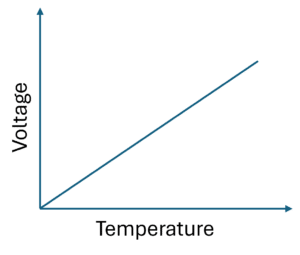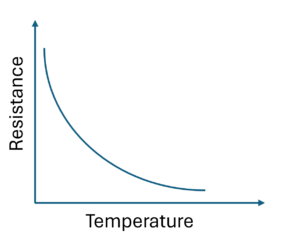The perioperative measurement of temperature is mandated by the AAGBI, and therefore an understanding of the equipment used to measure temperature is expected in the Primary FRCA. Methods of temperature measurement can be categorised as non-electrical, electrical and infrared.
Here on TeachMeAnaesthetics, we aim to cover the absolute key details of high yield exam topics, which can then be supplemented with further reading as needed.
In this article, we will discuss the different tools that can be used to measure temperature, and discuss their relative advantages and drawbacks.
Importance of Temperature Measurement
“So, tell me – why do we bother measuring temperature in theatre, and what methods of temperature measurement do you know?”
Your answer to this question may start with something about the mechanisms by which patients lose heat in theatre, before going on to discuss some of the physiological effects of hypothermia. These include:
- Haematological: Impaired coagulation, impaired platelet function
- Cardiac: Risk of arrhythmia
- Pharmacological: Reduce rate of drug metabolism, reduced MAC
- Metabolic: Shivering increases oxygen consumption
- Renal: ‘Cold diuresis’ as an increase in central circulating volume, caused by vasoconstriction, increases the GFR
And then, your answer about the different methods of temperature measurement might cover some of the following..
Non-electrical Methods of Temperature Measurement
Liquid Expansion Thermometers
These relatively simple devices rely on a substance that expands with increased temperature, which is calibrated to a scale. A prime example of this is the humble mercury thermometer.
The advantage is clear – they are cheap, readily available, and easy to use. However, the inherent risk of a toxic substance such as mercury is less than ideal, and they have a slow response time.
Gas Expansion Thermometers
These devices use an aneroid gauge, which is a fancy term for a gauge without liquid.
As the gas within the gauge is heated, the kinetic energy within the molecules increase. As the volume within the gas container is fixed, the gas molecules exert more pressure on the gauge, causing it to stretch and move along a dial calibrated for temperature.
While they are sensitive, they are also large, bulky and have a slow response time.
Infrared Thermometers
Infrared thermometers, commonly used in theatre, the wards, and homes around the UK, rely on two principles.
Firstly, the ‘pyroelectric effect’ describes how some substances become temporarily charged when exposure to infrared radiation. Secondly, the wavelength and intensity of infrared radiation varies with temperature.
Combined, this means that as temperature varies, the potential difference generated by pyroelectric crystals in the thermometer varies, and therefore temperature can be estimated.
Advantage of this technique include that the equipment is small, portable, readily available, and has a rapid response time.
A key disadvantage is that it relies on the infrared beam reaching the tympanic membrane, which can be affected by wax, abnormal anatomy, and a bad aim.
Electrical Methods of Temperature Measurement
Thermocouple
A thermocouple is a device containing two dissimilar metals (e.g. copper and constentan). Its function relies on the Seebeck effect, which describes how the voltage generated at the junction of two dissimilar metals is directly proportional to temperature and thus increases in a linear manner.
They are accurate, have a rapid response time, and are small. However, the voltage generated is tiny and therefore needs signal amplification.

Figure 1
Linear relationship between voltage and temperature in a thermocouple
Resistance Thermometer
No prizes for guessing how this works! As the temperature increases through a metal wire (platinum, copper, nickel) the resistance also increases in a linear manner. When correctly calibrated, the resistance can therefore be used to infer temperature. They are incredibly accurate.
However, they have a slow response time, and are bulky and fragile.

Figure 2
The relationship between resistance and temperature in a resistance thermometer
Thermistor
Lastly, the thermistor. A thermistor contains a metal oxide in which resistance displays a negative exponential relationship with temperature.
Due to their robustness, they are used in various bits of equipment including nasopharygeal temperature probes.
However, they require calibration as they are subject to ‘drift’, where drift refers to a previously calibrated device becoming unreliable.

Figure 3
Relationship of resistance and temperature in a thermistor (negative exponential)
Suggested Reading
Chapter 6.14. Equipment in Anaesthesia and Critical Care: A complete guide for the FRCA. Aston, Rivers, Dharmadasa. 2014.
Chapter 63. The Primary FRCA structured oral examination Study Guide 1. 2nd edition. Wijayasiri and McCombe. 2016.